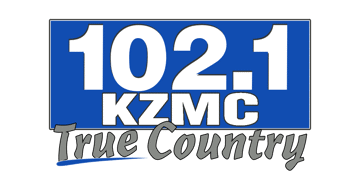Rural Mainstreet Economy Down for 10th Straight Month

OMAHA, Neb. (June 20, 2024) — For a 10th straight month, the overall Rural Mainstreet Index (RMI) sank below growth neutral, according to the June survey of bank CEOs in rural areas of a 10-state region dependent on agriculture and/or energy.
Overall: The region’s overall reading for June sank to 41.7 from 44.2 in May. The index ranges between 0 and 100, with a reading of 50.0 representing growth neutral.
“Higher interest rates, weak agriculture commodity prices and sinking agriculture equipment sales pushed the overall reading below growth neutral for the 10th straight month,” said Ernie Goss, PhD, Jack A. MacAllister Chair in Regional Economics at Creighton University’s Heider College of Business.
According to James Brown, president of Hardin County Savings Bank in Eldora, Iowa, “Farm operating loans are up 20% in total volume compared to last year, a sign that cash flow and cash (balances) are down from last year.”
Farming and ranching land prices: After rising above the growth neutral threshold for 53 straight months, the region’s farmland slumped below growth neutral for a second consecutive month to 49.9, but it was up from May’s 47.9. “Only 4.3% of bank CEOs reported that farmland prices expanded from May levels,” said Goss.
According to trade data from the International Trade Association, regional exports of agriculture goods and livestock for 2024 year-to-date were down 4.1% from the same period in 2023.
Farm equipment sales: The farm equipment sales index for June dropped to 31.8 from 34.0 in May. “This is the 12th time in the past 13 months that the index has fallen below growth neutral. Higher borrowing costs, tighter credit conditions and weak grain prices are having a negative impact on the purchases of farm equipment,” said Goss.
Banking: The June loan volume index stood at a very strong 79.2 but was down from 82.0 in May and from April’s record high 85.4. The checking deposit index sank to 34.8 from May’s 44.0. The index for certificates of deposits and other savings instruments rose to 63.0 from 62.0 in May.
Jeff Bonnett, CEO of Havana National Bank in Havana, Ill., reported that, “As an Ag bank, we would like to see at least one interest rate cut by year end. This will help boost commodity prices, which our farm customers so desperately need coming off such weak prices for their 2023 harvest.”
“Delinquency rates for farm and business loans on Rural Mainstreet have remained virtually unchanged over the past six months according to bank CEOs,” said Goss. Furthermore, only 8.7% of bankers have increased their farm loan rejection rates, while approximately 13.0% and 4.3%, respectively, reported restructuring or reducing the loan-to-value ratios.
Hiring: The new hiring index for June decreased to 47.7 from May’s 50.0. This is the lowest reading for the hiring gauge since January 2021. “Only 4.5% of bankers reported an increase in hiring from the previous month. This is down from 7.7% in May and 13.6% in April,” said Goss.
Confidence: Rural bankers remain very pessimistic about economic growth for their area over the next six months. The June confidence index increased to a very weak 29.2 from May’s 28.8. “Weak agriculture commodity prices and farm exports, combined with downturns in farm equipment sales over the past several months, continued to constrain banker confidence,” said Goss.
Home and retail sales: After seven straight months of below growth neutral readings, the home sales unexpectedly expanded to 62.5 from 46.0 in May sales. On the other hand, retail sales continued to fall with a June index of 41.3, which was down from 46.1 in May. “High consumer debt, elevated interest rates and weaker farm income are cutting into retail sales for the Rural Mainstreet Economy,” said Goss.
The survey represents an early snapshot of the economy of rural agriculturally- and energy-dependent portions of the nation. The Rural Mainstreet Index is a unique index covering 10 regional states, focusing on approximately 200 rural communities with an average population of 1,300. The index provides the most current real-time analysis of the rural economy. Goss and Bill McQuillan, former Chairman of the Independent Community Banks of America, created the monthly economic survey and launched it in January 2006.
Below are the state reports:
Colorado: The state’s RMI for June dropped to 56.7 from May’s 61.5. The farmland and ranchland price index for June rose to 61.5 from 58.2 in May. The state’s new hiring index sank to 54.3 from 62.5 in May. According to trade data from the International Trade Association, exports of agriculture goods and livestock for 2024 year-to-date were up 197.6% from the same period in 2023.
Illinois: The state’s June RMI rose to 42.7 from May’s 39.6. The farmland price index increased to 49.4 from 46.0 in May. The state’s new hiring index fell to 47.1 from 47.4 in May. According to trade data from the International Trade Association, exports of agriculture goods and livestock for 2024 year-to-date were down 18.0% from the same period in 2023. Jim Eckert, CEO of Anchor State Bank in Anchor, reported that, “Crops are mostly planted in this area of Illinois, although areas south have been much wetter and planting is incomplete.”
Iowa: June’s RMI for the state increased to 48.0 from May’s 40.6. Iowa’s farmland price index for June declined to 50.9 from 52.2 in May. Iowa’s new hiring index for June increased to 49.0 from 47.7 in May. According to trade data from the International Trade Association, exports of agriculture goods and livestock for 2024 year-to-date were up 20.3% from the same period in 2023.
Kansas: The Kansas RMI for June sank to 34.6 from May’s 35.4. The state’s farmland price index slumped to 47.1 from 49.2 in May. The new hiring index for Kansas fell to 44.3 from 45.9 in May. According to trade data from the International Trade Association, exports of agriculture goods and livestock for 2024 year-to-date were down 4.4% from the same period in 2023.
Minnesota: The June RMI for Minnesota slipped to 50.2 from 51.0 in May. Minnesota’s farmland price index rose to 51.5 from 49.3 in May. The new hiring index for June was unchanged from May’s 55.3. According to trade data from the International Trade Association, exports of agriculture goods and livestock for 2024 year-to-date were down 12.2% from the same period in 2023.
Missouri: The state’s June RMI climbed to 54.3 from May’s 51.2. The farmland price index expanded to 53.2 from 51.3 in May. The state’s new hiring gauge plummeted to 52.1 from May’s 65.2. According to trade data from the International Trade Association, exports of agriculture goods and livestock for 2024 year-to-date were down 17.6% from the same period in 2023.
Nebraska: The Nebraska RMI for June sank to 39.5 from 41.8 in May. The state’s farmland price index for June increased to 48.5 from 46.7 in May. Nebraska’s June new-hiring index sank to 46.0 from 48.2 in May. According to trade data from the International Trade Association, exports of agriculture goods and livestock for 2024 year-to-date were up 33.8% from the same period in 2023.
North Dakota: North Dakota’s RMI for June slumped to 36.3 from 41.2 in May. The state’s farmland price index rose to 47.5 from 46.5 in May. The state’s new hiring index sank to 44.9 from 48.0 in May. According to trade data from the International Trade Association, exports of agriculture goods and livestock for 2024 year-to-date were up 7.3% from the same period in 2023.
South Dakota: The June RMI for South Dakota slumped to 45.5 from May’s 47.9. The state’s farmland price index rose to 50.1 from 48.4 in May. South Dakota’s June new hiring index declined to 48.1 from 50.3 in May. According to trade data from the International Trade Association, exports of agriculture goods and livestock for 2024 year-to-date were up 24.5% from the same period in 2023.
Wyoming: The June RMI for Wyoming sank to 37.5 from 39.3 in May. The June farmland and ranchland price index increased to 47.9 from 45.9 in May. Wyoming’s new hiring index fell to 45.3 from May’s 47.3. According to trade data from the International Trade Association, exports of agriculture goods and livestock for 2024 year-to-date were down 66.8% from the same period in 2023.
